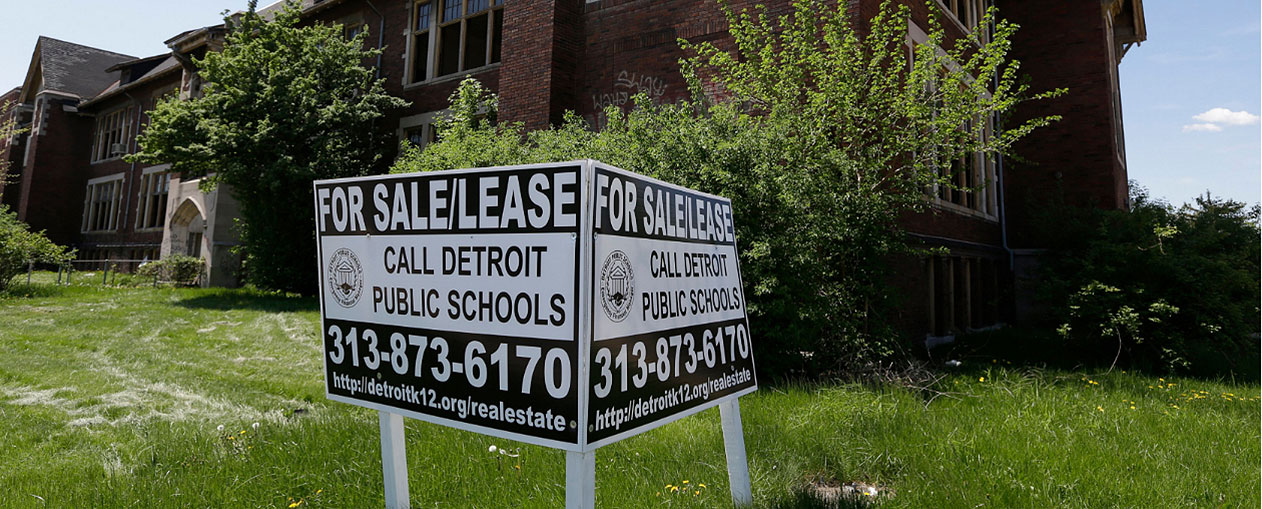
DETROIT— Ever motivated to influence the consciousness of workers, capitalists have made repeated attacks against public education. In their eyes, schools are little more than fertile ground for “critical race theories” and changing gender identity norms. Public schools are focused on destroying traditional values first and teaching basic math second, so corporate media companies would have you believe.
The recent wave of attacks on critical race theory and sex education is part of a larger political agenda, according to retired professor and author Anita Waters. “What this corporate agenda [does] is spin moral panics about what’s going on in your children’s classroom,” Waters said. “And parents of children who are in elementary school, they’re vulnerable to all these kinds of scare tactics.”
Billionaire-funded privatization schemes rely on spreading “critical race theory” fantasies to propel this agenda.
In Michigan, the DeVos family is financing the ballot initiative “Let MI Kids Learn” to convince voters that giving money to private schools is within their best interests. Teachers’ unions have voiced concerns about the dangers this initiative and others like it pose to public education.
The DeVos family and their “corporate allies have already tried numerous times to pass voucher programs to defund public schools,” said David Hecker, president of the Michigan chapter of the American Federation of Teachers.
Michigan schools are already struggling to meet the needs of the children after years of cuts to give tax breaks to the rich in the state.
Schools and capitalism
Research on education trends shows that methods of funding schools, curricula, and attitudes towards students tend to reproduce existing class, racial, and gendered hierarchies. Girls are trained to avoid science and math. Black and Latin students are treated as discipline problems. Working-class students of all races are trained to be subordinates, workers, and menial laborers.
Despite massive resistance from the country’s educators, teachers’ unions, and parents, reforms such as “No Child Left Behind” and the push for charter schools only reinforced these stark differences.
Those reforms closely linked school funding and teachers’ jobs to how well students perform on tests. Those tests do not measure true intellectual or technical abilities, creativity, or critical thought. They measure the ability to follow the rules and memorize certain types of information.
Such reforms merely train students to become obedient workers, capable of repetitive tasks and incapable of critical thinking that could pose a genuine threat to capitalist structures.
Many teachers who enter the profession cite an inspirational teaching figure or mentor in their lives as someone who prompted them to be active and critical learners. But today, they are hemmed in by a narrow curriculum and rigid testing policies.
While right-wingers have created authoritarian diversions from understanding the true causes of the problem, neoliberal politicians point fingers at teachers themselves. Unfortunately, teachers’ unions still get a lot of heat for their goal of protecting teachers as workers.
When teachers’ unions struggled to protect teachers, students, and school families from COVID infections, the Trump administration threatened to cut off federal resources if the districts didn’t force teachers and students back into the classroom in the fall of 2020. This was in the depths of a pandemic that eventually took more than a million lives.
Democratic politicians like Chicago Mayor Lori Lightfoot, former New York Governor Andrew Cuomo, and former Los Angeles Mayor Antonio Villaraigosa adopted a “pro-teacher, anti-union” position, scapegoating teachers and their collective bargaining units for both cuts in public education and failures of terrible policies that deny students’ creativity and independence as learners.
From the view of the ruling class, the education system isn’t broken; it is working as intended. In a capitalist society that depends on the reproduction of a working class that is 70% of the adult working age of the population, stark barriers to the highest quality educational resources are the norm.
Public data reveals that more than half of first-year students at the University of Michigan come from households in the highest income brackets. Fake universities like Trump University or corrupt, predatory institutions like Corinthian Colleges use high-pressure advertising tactics that target vulnerable populations. They further degrade the capacity for access to quality education.
The school-to-prison pipeline, low levels of higher education preparation, and the massive costs for college and universities combine to create a gigantic contradiction.
Education in the United States is portrayed as a vehicle for upward social mobility. In reality, most working-class people are denied the keys to that vehicle. This isn’t an accident, nor can working-class kids and young adults be blamed. This is a deliberate educational policy.
Realities
In 2019, the National Center for Education Statistics at the Department of Education reported that 43 million adults in the U.S. possess low literacy skills. Experts define literacy as “the ability to understand, evaluate, use and engage with written texts to participate in society, achieve one’s goals, and develop one’s knowledge and potential.” However, this definition is notoriously inadequate, as it references 4th-grade-level reading skills as the baseline.
A deeper analysis reveals that 54% of U.S. adults read English below a 6th-grade level. Only about one-third of these people were born outside the U.S. In other words, vast swaths of the adult population cannot score well on a sixth-grade reading test. Can they genuinely engage with and participate in society in ways that allow them to achieve self-determined goals? Or are their goals already narrowly defined for them? It is reasonable to see that sixth-grade literacy is not the best measuring line for the highest possible technical and cultural capacity of a population.
Measures of U.S. literacy rates compare unfavorably with other developed countries, such as Japan, Canada, Germany, and the U.K. Workers in retail, clerical, and similar service industry jobs tend to score far lower than national or international averages on literacy and numeracy tests. Structurally segregated by race and driven by economic inequalities, education, as conceived, is designed to limit the technical and cultural development of the working class.
Part of the issue lies in the spending priorities set by the U.S. capitalist class. Educating the kids of working-class families is not a high priority. Instead, the dominant, bipartisan focus of the U.S. government is military spending and mass incarceration. At over $800 billion in 2022, U.S. military spending outstripped the total expenditures by local, state, and federal governments on pre-K through grade-12 education. With 4% of the world’s population, the U.S. spends more than twice per capita on its military than China, a country four times the U.S. population.
In addition, the Urban Institute reports that between 1977 and 2014, growth in public spending on mass incarceration (police, courts, prisons, etc.) significantly outpaced growth in spending on education. States continue to pay far higher rates per prisoner than elementary or secondary school students.
The priorities of the U.S. capitalist class center on the U.S.’s role as the leading imperialist power (if in decline). They fear working-class uprisings and cannot appropriately manage social problems such as poverty, health care needs, environmental issues, housing shortages, and unemployment. Policing and mass incarceration seem, to them, to be better solutions.
The struggle for an education system that prioritizes the highest possible technical and cultural capacity of working-class youth and adults is a decisive part of the class struggle. Support for the efforts of the education-related labor unions—teachers, staff, professors, and public workers—is an essential feature of building the power of our whole class.
Deepening equality of access and outcomes depends on protecting the public status of the lion’s share of the system. It depends on fighting racial segregation of resources and eliminating cultural biases that reserve certain educational tracks for specific genders, races, or social classes.











